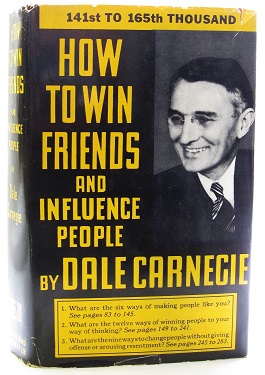Copywriting 101
- Course Introduction
- Understanding Your Audience
- Writing Effective Headlines and Taglines
- Crafting Persuasive Body Copy
- Writing for Different Mediums
- SEO and Content Marketing Writing
- Legal and Ethical Considerations
- The Revision Process
- Building a Portfolio
- Real-world Applications
- Integration and Application (Extra time for Project Completion)
Understanding Your Audience
The Power of Headlines in Copywriting

1936 book by Dale Carnegie.
In the world of copywriting, headlines are often considered the most critical part of any piece of content. They are the first thing a reader sees and can be the deciding factor in whether or not someone chooses to engage with the content. In this unit, we will explore the role of headlines in copywriting, their impact on reader engagement, and examine case studies of successful headlines.
The Role of Headlines in Copywriting
Headlines serve as the gateway to the content that follows. They are designed to grab the reader's attention, pique their interest, and compel them to read further. A well-crafted headline can set the tone for the entire piece, provide a snapshot of the content, and even influence the reader's perception of the brand or product.
In advertising copy, headlines are often used to highlight the unique selling proposition of a product or service. In digital copywriting, headlines play a crucial role in SEO (Search Engine Optimization), helping to improve the visibility of the content on search engines.
The Impact of Headlines on Reader Engagement
The effectiveness of a headline can significantly impact reader engagement. A compelling headline can draw readers in, increase click-through rates, and boost overall engagement with the content. On the other hand, a poorly crafted headline can deter potential readers, regardless of the quality of the content that follows.
Research has shown that 80% of people will read a headline, but only 20% will read the rest of the content. This statistic underscores the importance of investing time and effort into crafting effective headlines.
Case Studies of Successful Headlines
Let's look at some examples of successful headlines and why they work:
-
"How to Win Friends and Influence People": This classic book title is a perfect example of a compelling headline. It promises a benefit (winning friends and influencing people) and uses powerful, action-oriented words ("win" and "influence").
-
"The Secret of Getting Ahead is Getting Started": This headline uses the curiosity factor to draw readers in. It promises to reveal a "secret," which naturally piques the reader's interest.
-
"10 Ways to Make Your Home Look More Expensive on a Dime": This headline works because it combines a numbered list (which tends to perform well) with a clear benefit (making your home look more expensive) and a compelling proposition (doing it on a dime).
In conclusion, headlines are a powerful tool in copywriting. They can attract readers, set the tone for the content, and even influence the perception of a brand or product. Therefore, understanding how to craft effective headlines is a crucial skill for any copywriter.